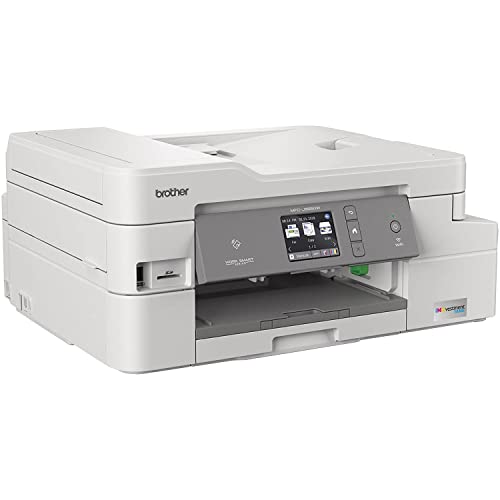In today's digital age, printers have become an essential device for both personal and professional use. With a wide range of options available in the market, it can be overwhelming to choose the right printer for your home. This article aims to provide a comprehensive guide to help you understand which type of printer is typical for home use.
- Inkjet Printers:
Inkjet printers are the most common type of printer found in homes. They work by spraying tiny droplets of ink onto the paper, resulting in high-quality prints. Inkjet printers are versatile and can handle various types of media, including plain paper, photo paper, and even fabric. They are also relatively affordable and compact, making them suitable for home use. - Laser Printers:
Laser printers are another popular option for home use. They use a laser beam to transfer toner onto the paper, producing sharp and precise prints. Laser printers are known for their fast printing speed and high-volume capabilities, making them ideal for households with heavy printing needs. However, they tend to be larger and more expensive than inkjet printers. - All-in-One Printers:
All-in-one printers, also known as multifunction printers, combine the functionalities of a printer, scanner, copier, and sometimes even a fax machine. These printers offer convenience and space-saving benefits, as they eliminate the need for separate devices. All-in-one printers are available in both inkjet and laser variants, allowing you to choose based on your specific requirements. - Wireless Connectivity:
With the increasing popularity of mobile devices, wireless connectivity has become a crucial feature for home printers. Many printers now offer Wi-Fi or Bluetooth connectivity, allowing you to print directly from your smartphone, tablet, or laptop without the need for cables. This feature enhances convenience and flexibility, especially in a home environment where multiple devices may need to access the printer. - Print Quality and Resolution:
When choosing a printer for home use, it's essential to consider the print quality and resolution. Higher resolution printers produce sharper and more detailed prints, which is particularly important for photo printing or professional documents. Look for printers with a minimum resolution of 1200 dpi (dots per inch) for optimal results.
Conclusion:
In conclusion, when selecting a printer for home use, it's crucial to consider factors such as inkjet or laser technology, all-in-one functionality, wireless connectivity, and print quality. Each type of printer has its advantages and disadvantages, so it's essential to assess your specific needs and budget before making a decision. By understanding the different options available, you can choose the perfect printer that meets your requirements and enhances your printing experience at home.

